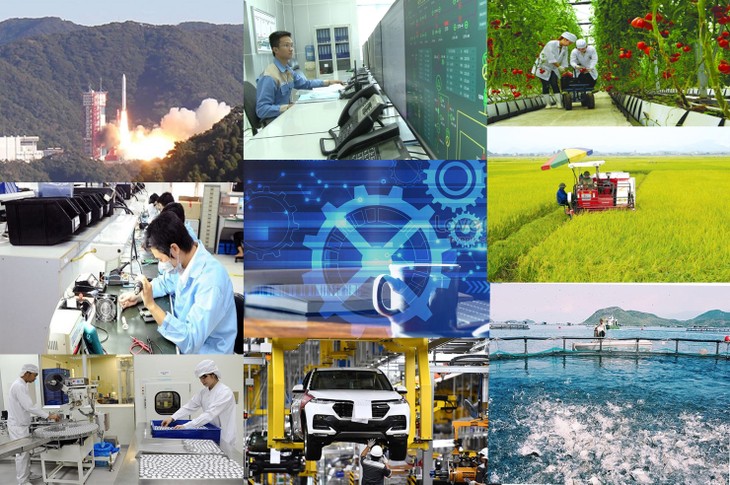(VOVWORLD) - The openness of the economy and new generation bilateral free trade agreements have offered Vietnamese enterprises many development opportunities. With science and technology application and innovation and incentive mechanisms and policies, Vietnamese enterprises are increasing their competitiveness in domestic and global markets.
 (illustrative photo) (illustrative photo) |
To further improve their productivity, quality, and competitiveness, many Vietnamese enterprises have increased their investment in innovation, science and technology.
Creating a sustainable production and service ecosystem
Rang Dong Lighting and Vacuum Flask Joint Stock Company, the leading lighting and vacuum flask manufacturer in Vietnam, has deployed several innovation strategies throughout its 65 years of development. The company has built research centers to carry out its digital transformation strategy. Nguyen Doan Ket, Rang Dong’s Deputy General Director, said the company has invested in smart production lines, robotics, machine learning technology, artificial intelligence, and industrial Internet of Things.
“We are building a smart, flexible production ecosystem toward green production by applying the achievements of the 4th Industrial Revolution. After studying international models, we built a model that fits our situation as a state-owned industrial enterprise. We must automate our machinery and equipment systems, increase our degree of automation, and manage all machines and equipment on the same platform,” Ket said.
Nafoods Group has been a pioneer in applying high tech in agriculture and digitizing growing areas to meet the import requirements of the most demanding markets. Its passion fruit products are exported to 70 countries and earn hundreds of millions of dollars.
Nafoods Group representative Phan Van Xuan said: “We purchase from concentrated production areas and supply chains. The raw materials are grown and processed under strict technical guidelines. The result is consistently better quality.”
The Minh Phu Seafood Corporation has been successful with the MPBiO biological shrimp farming technology. It uses antagonistic microorganisms to inhibit pathogens, and treats the pond water with microorganisms to enhance the shrimp's immune health. This technological model reduces annual chemical costs 95%, electricity costs 50-70%, and feed costs more than 30%, and output is over 70,000 tons per year. The new technology allows Minh Phu to meet the requirements of customers in the US, Japan, Europe, and South Korea.
Promoting the Vietnamese trademark in the global market
Economists say the biggest opportunity the 4th Industrial Revolution brings to businesses is greater access to technology and automation. Advanced technology makes Vietnamese businesses more confident in marketing their brands domestically and boldly reaching out to the international market.
A number of Vietnamese brands have established a stable foothold in the international market – Vinamilk is sold in more than 60 countries and territories, Trung Nguyen promotes Vietnamese coffee worldwide, and ST25 rice has been repeatedly named the best rice in the world.
Vietnam’s information technology sector, particularly software providers like the Viettel Military Telecommunications Group, the FPT Technology Group, and CMC, has recorded remarkable growth, with many companies achieving a billion dollars in revenue in foreign markets.
Le Van Hoang, Chairman of the software and tech development ecosystem Kaopiz Holding, which has been very successful in the Japanese market, said: “Vietnam trails behind the global information technology industry, but Vietnamese engineers are very good, not inferior to foreign engineers, and we can create products of international standard and quality. Vietnam has huge opportunities to stake out a position on the world IT map.”
Thanks to impressive export growth, Vietnam is now one of the world’s top 20 countries and territories in total import and export value. And the value of Vietnam‘s national brand grew faster than any other national brand in the 2020-2022 period.
To increase capacity and product quality during the 4th Industrial Revolution, Vietnamese enterprises have identified their strengths in order to make the best decisions in adapting, innovating, and applying technology. With support from the Government, Vietnamese enterprises are confidently finding position in global value chains.